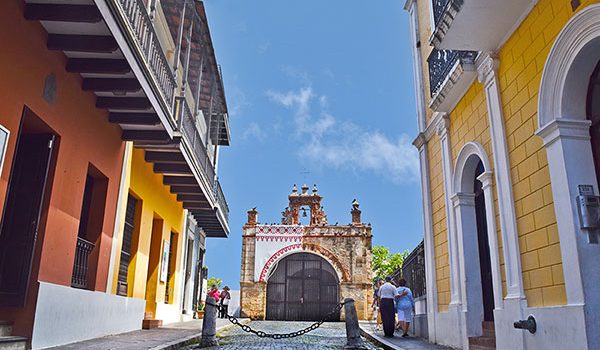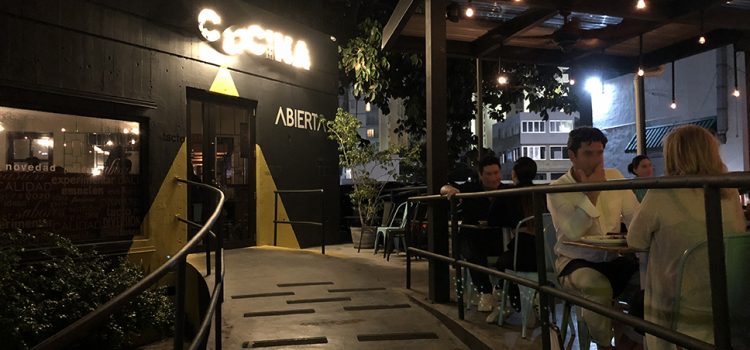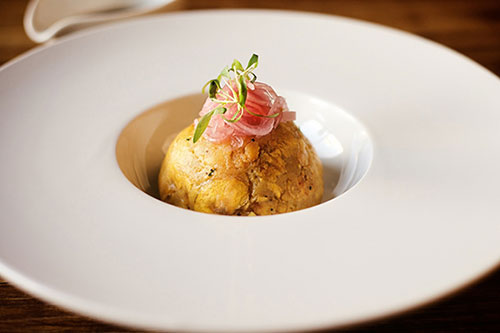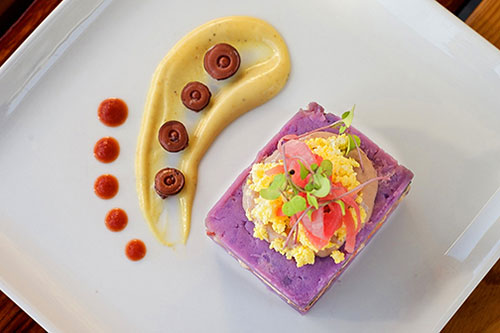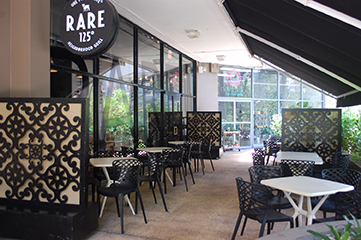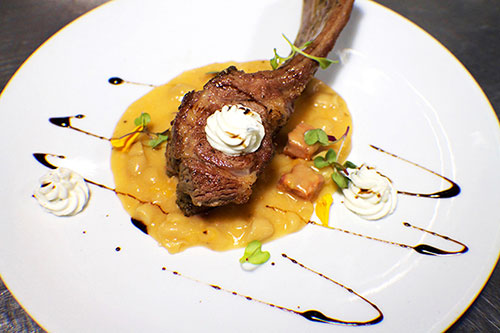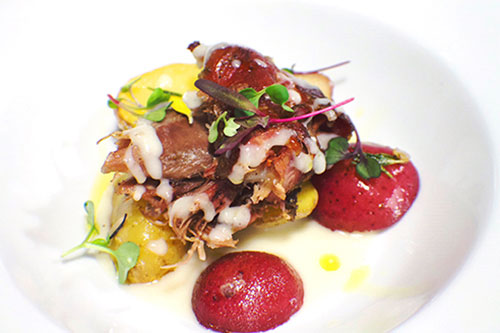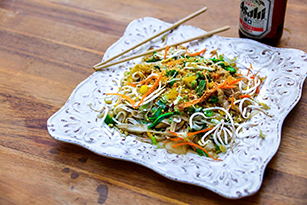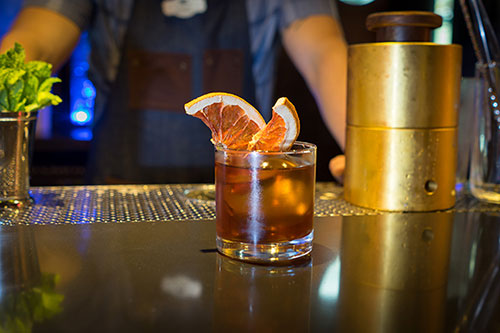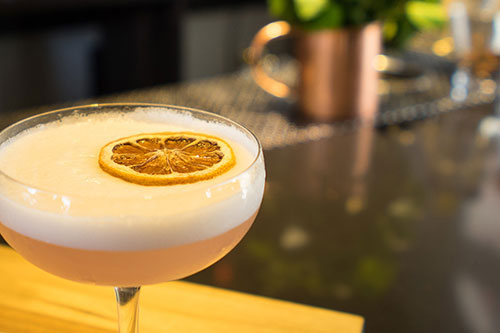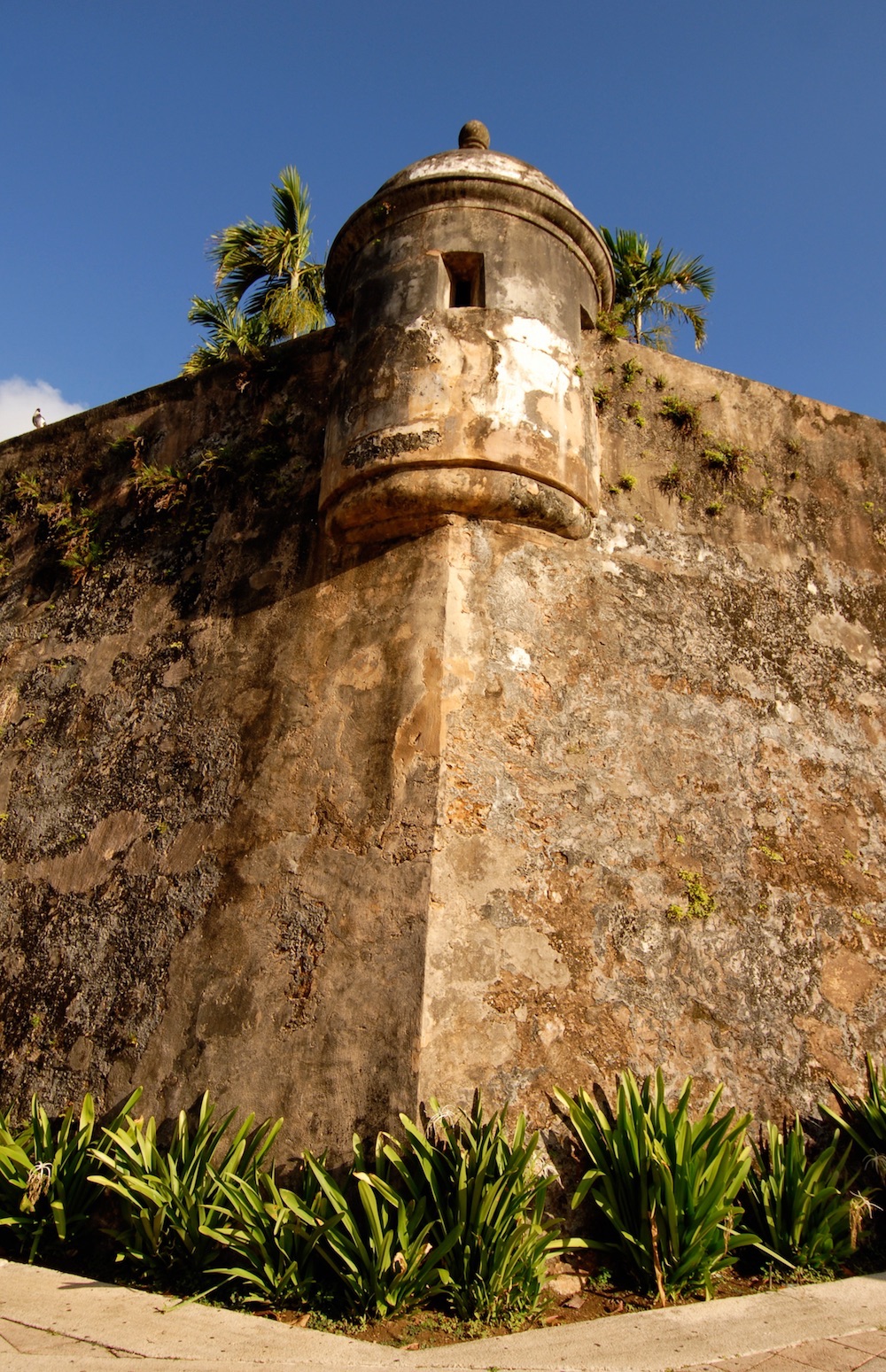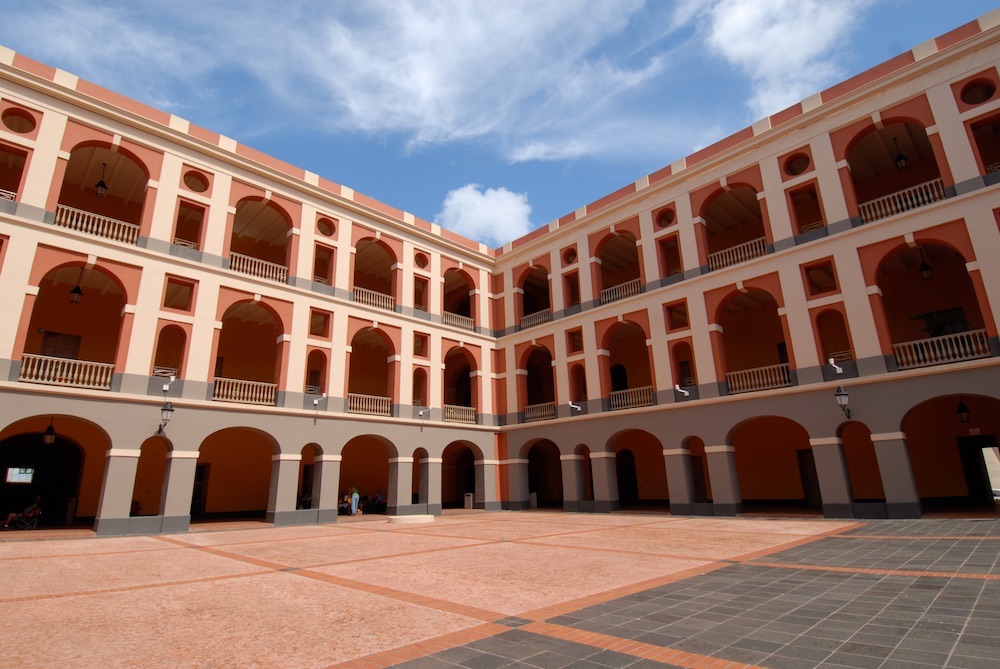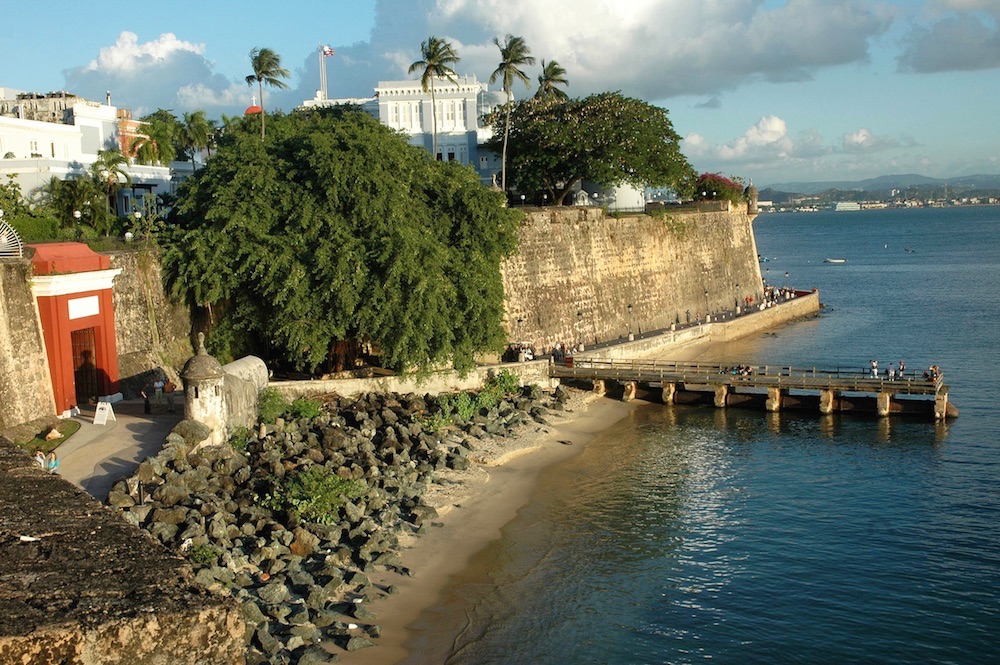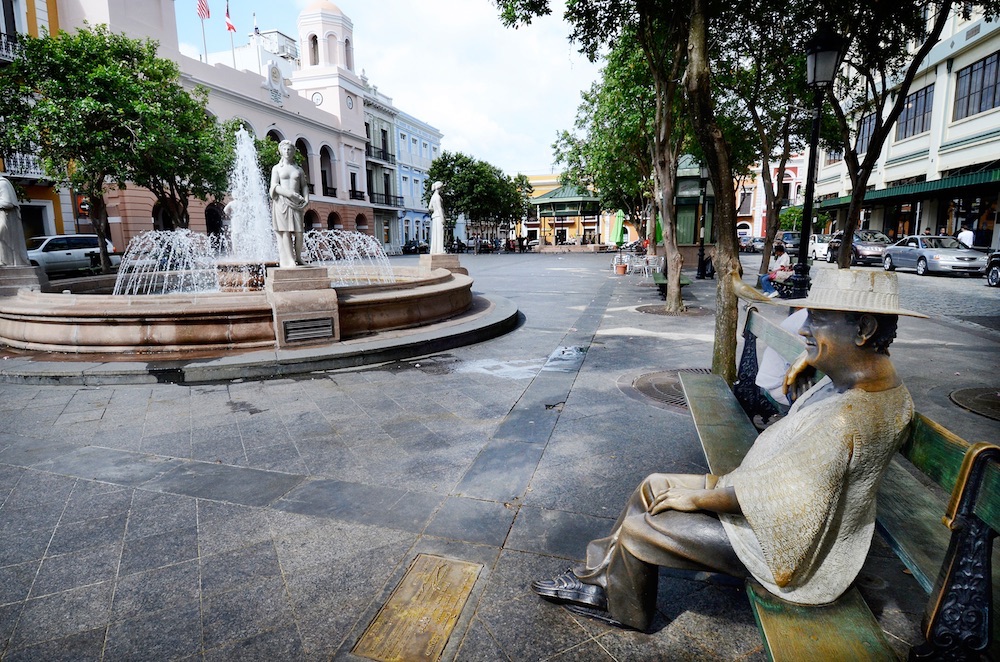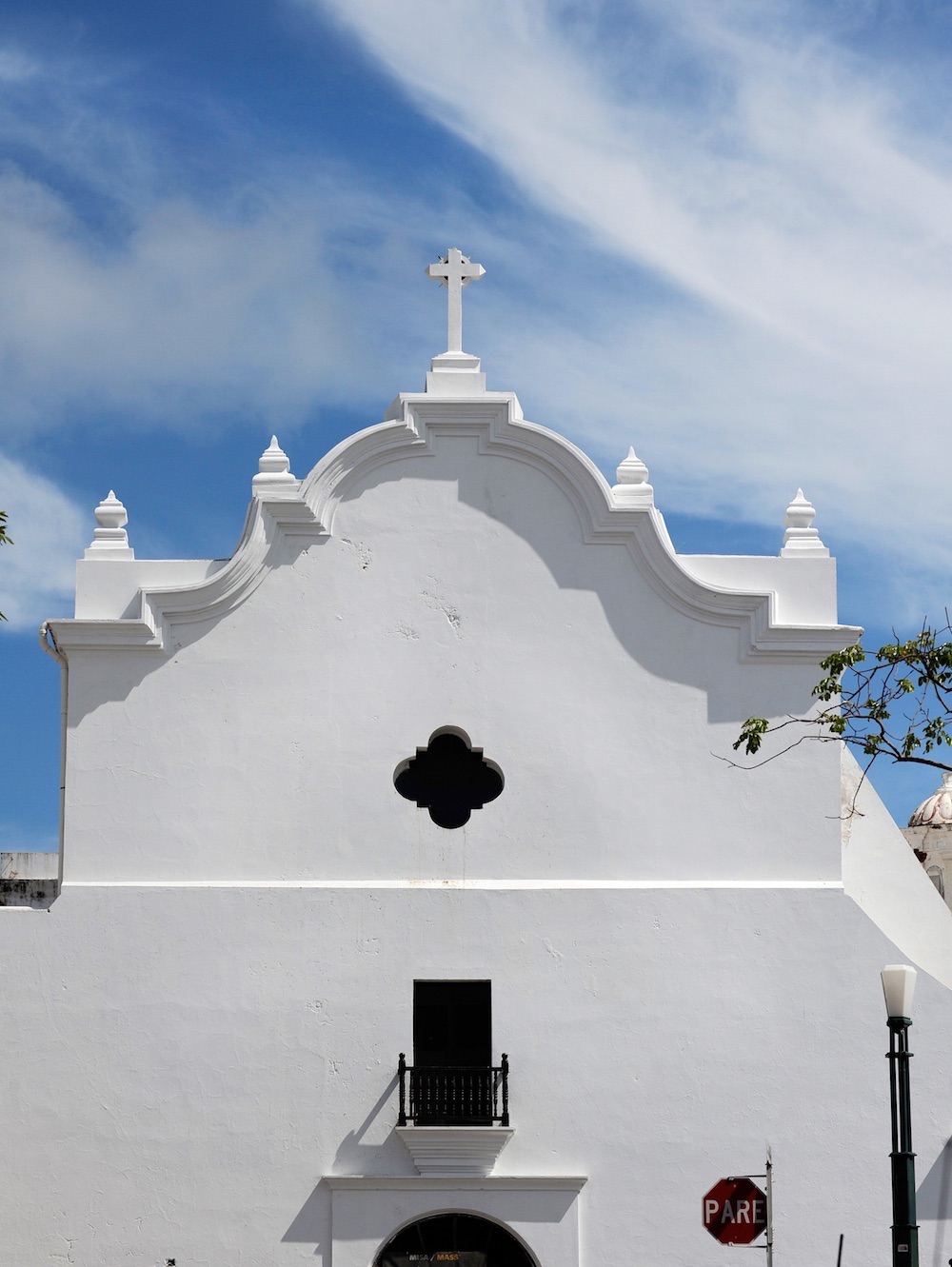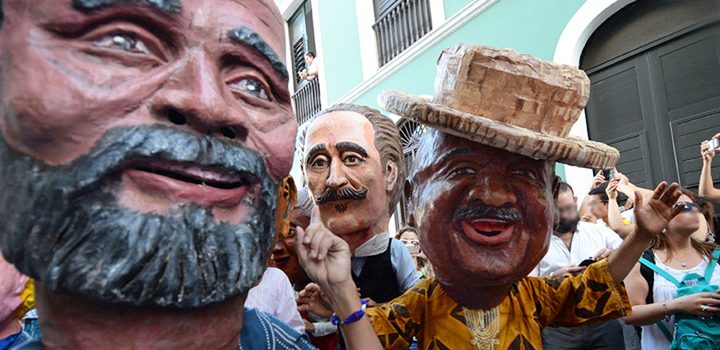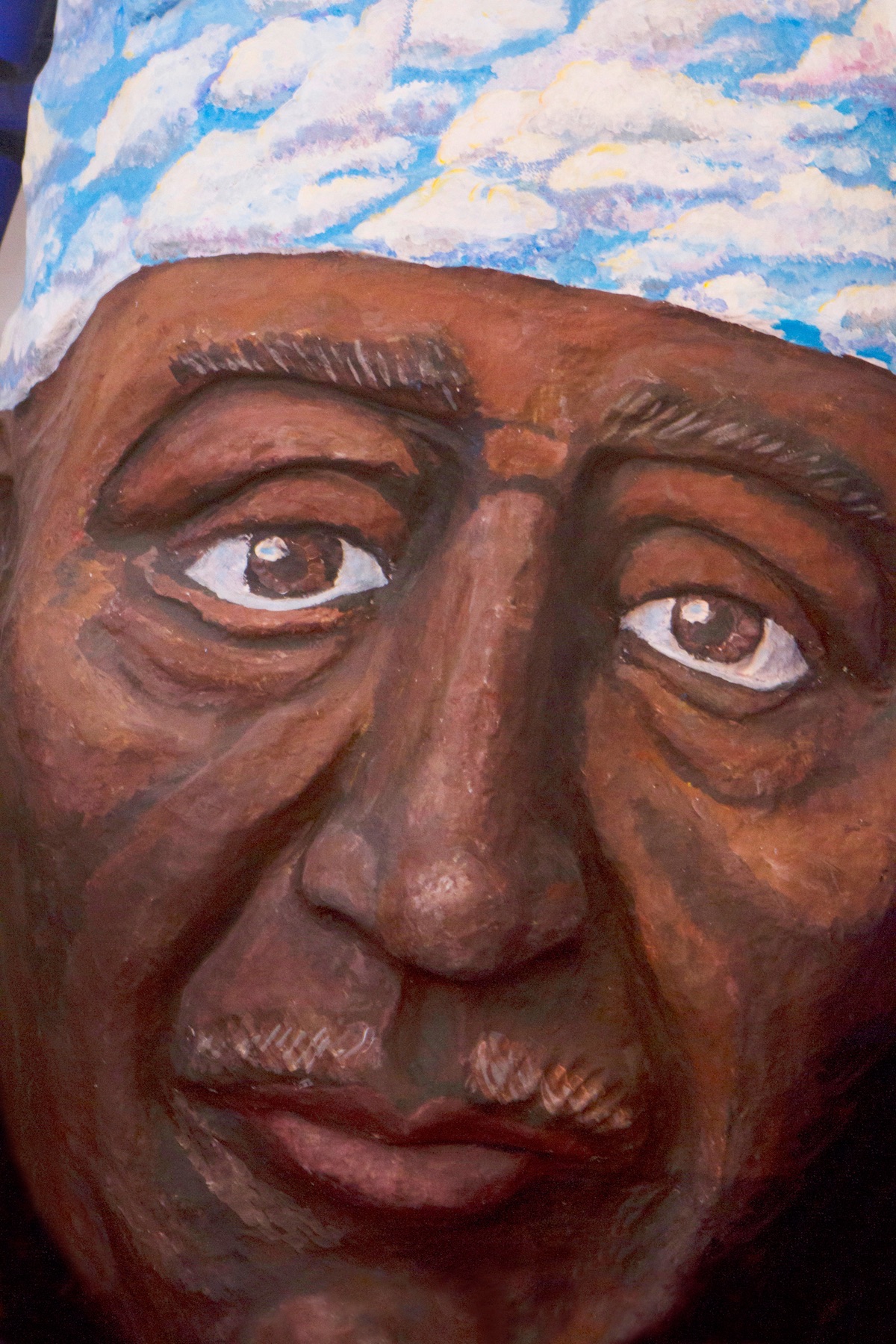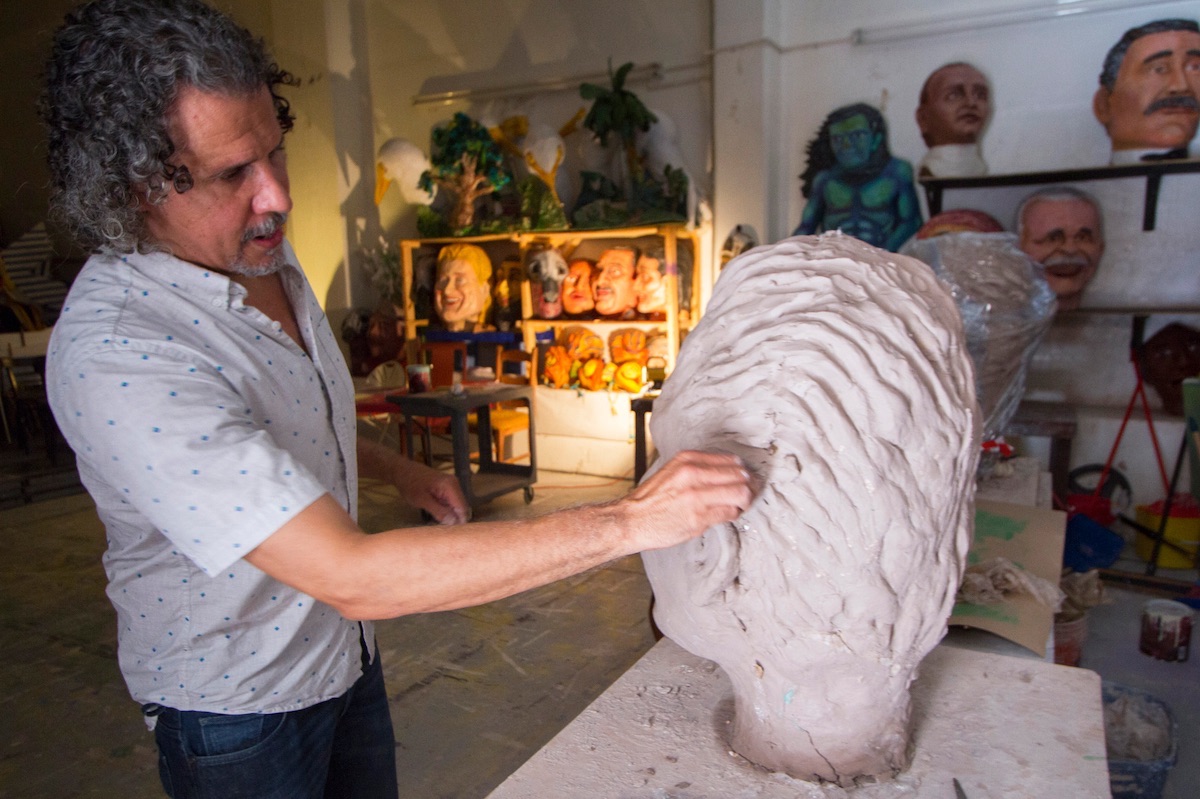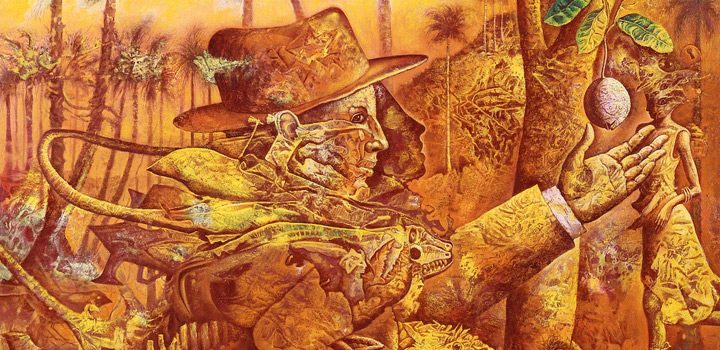En Mi Viejo San Juan
Anyone who has spent enough time in Old San Juan to be seduced by this gorgeous Spanish colonial jewel by the sea will leave still longing for “en mi Viejo San Juan,” or “in my Old San Juan,” just like that classic romantic ballad by Puerto Rican song writer Noel Estrada says.
Anyone who has spent enough time in Old San Juan to be seduced by this gorgeous Spanish colonial jewel by the sea will leave still longing for “en mi Viejo San Juan,” or “in my Old San Juan,” just like that classic romantic ballad by Puerto Rican song writer Noel Estrada says.
It won’t take long to get smitten. Old San Juan is the Americas’ most stunning restored Spanish colonial sector. Perched on a headland overlooking the dramatic ocean coast and the island’s main harbor, the mile-square city has museums, galleries, and boutiques selling fine art, crafts, and other unique items from around the island, region, and world, as well as some of the city’s finest hotels, restaurants, bars and other night spots.
Its blue-tinged cobblestone streets, originally built from the ballast of New World explorer ships, descend from an ocean-side boulevard to the wide promenade lining the tranquil waters of San Juan bay. They are lined with colorful colonial homes, with balconies full of bougainvillea, and deftly designed office buildings, ancient cathedrals, and stately government buildings and city plazas. The architecture spans Spanish colonial to baroque to Gothic to Art Deco.
At a minimum, you’ll want to spend a morning or afternoon shopping and seeing the sites in Old San Juan, but if time warrants, there is enough to do to fill a full day. Make sure to have a delicious, gorgeously set lunch or dinner (or both!) at one of the Old City’s prime restaurants.
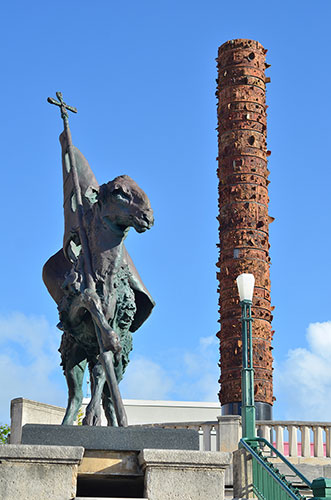
Plaza del Quinto Centenario (Quincentennial Plaza) was inaugurated in 1992 to celebrate the 500th birthday of the founding of the New World by the Spanish.
The Old City is largely defined by its twin fortresses – El Morro, or Castillo de San Felipe del Morro, and San Cristobal, or Castillo San Cristobal – that tower over, respectively, the entrance to San Juan Bay and the narrow land-bridge connecting the old city to the rest of San Juan. They combine to form the San Juan National Historic Site, which is managed by the U.S. National Park Service. There is trolley service between the two installations, but the Oceanside sidewalk makes for a great walk, especially on sunny days.
The fortresses and the massive wall surrounding the city have survived natural disasters and foreign invasions for some five centuries and still wield an enormous presence in the life of Old San Juan. They are filled with historic treasures and offer dramatic views of the tropical ocean, with historic exhibits, guided tours and informational brochures.
El Morro unfolds in a number of layers, with ramps winding from the dungeons to the troop barracks to the iconic guard towers. Its northernmost point overlooks the ocean surf crashing against the rocky coast. The great green lawn surrounding El Morro has become a favorite spot to fly kites and to picnics. Kites and refreshments are available at street carts outside the Spanish colonial fortress.
San Cristobal’s vast walls rise more than 150 feet above the ocean, and various lookouts offer ocean and city views that will only add to you appreciation of Old San Juan’s beauty. The fortress was constructed in circular fashion with the interior area linked by tunnel and moats to its outer rings dedicated to defense. Make sure to check out the killer view from the Devil’s Sentry Box, where Spanish guards were said to disappear without a trace while on watch.
You can ponder in all its glory El Morro, stretching across its vast green grounds and the emerald blue Caribbean horizon, from the nearby Plaza del Quinto Centenario (Quincentennial Plaza). It was inaugurated in 1992 to celebrate the 500th birthday of the founding of the New World by the Spanish, and features a granite and clay totem-like monument and adjacent fountains and sculptures celebrating Puerto Rico’s rich cultural heritage. Beyond the plaza is the Cuartel de Ballaja, a 19th century army barracks that is one of the largest buildings constructed by the Spanish in the Americas. Today it house the Museum of the Americas, focused on indigenous and regional art, a pleasant outdoor cafe and a handsome courtyard that is often host to special events. The Asilo de Beneficencia, a former indigents’ hospital dating from 1832, is also nearby and the Institute of Puerto Rican Culture. Also nearby is Casa Blanca, a charming home that once belonged to Puerto Rico’s first governor, Juan Ponce de Leon, with an interesting museum and gorgeous gardens.
The Old City is host to the Caribbean’s hottest street party, the Fiesta de la Calle San Sebastian in mid-January, but you can catch its spirit on a visit to the street that bears its name on any of San Juan’s sultry nights. San Sebastian is a cobble-stoned street lined with bars and restaurants, and art galleries and workshops are just around its many corners. Laughter and the salsa, bomba and plena music associated with the festival pour out of the bars, with their large wooden doors thrown open to the street. The party has been raging here for more than a century.
This is also the birthplace of “Despacito,” the Luis Fonsi mega-hit featuring Daddy Yankee that has become the most streamed video of all time. The colorful seaside barrio that former Miss Universe 2006 Zuleyka Rivera saunters through in the video is La Perla, which is sandwiched on the Old San Juan coast between the two historic churches. The joyous dance scene at the end takes places at La Factoria, which has been named one of the world’s best bars, on Calle San Sebastian.
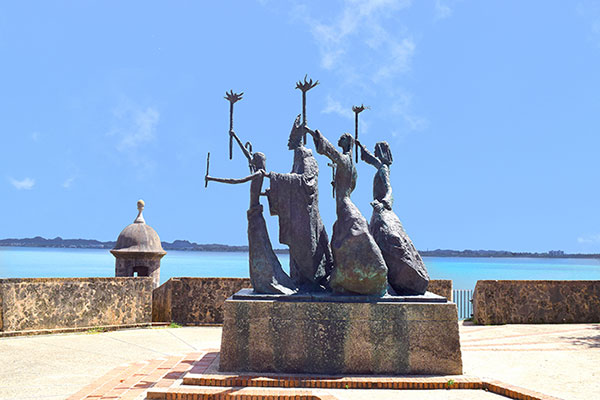
The Plazuela de la Rogativa is a gorgeous shady square overlooking the bay and Puerto Rico’s impressive governor’s mansion, La Fortaleza.
Some of the finest churches in the New World are in the vicinity of Calle San Sebastian and Calle Cristo, including the recently restored San Jose Church, a Gothic rarity and the celestial Catedral de San Juan, a vaulted beauty that is home to the impressive works of religious arts and rare artifacts, as well as the tomb of the island’s first governor, Juan Ponce de Leon, and the mummy of Roman martyr Saint Pio. The Plaza de las Monjas, or Nuns’ Plaza, might be the most deliciously shady spot in all of Puerto Rico, with a bay breeze funneling through tow of the old city’s most gorgeous tree-lined streets, with some of the most gorgeous colonial homes.
If you don’t stay at Hotel El Convento, you’ll want to come by for a tour anyway, if not a meal or a drink at the gorgeous restaurants located in its interior patio and street-level terrace restaurant. It was born in 1651 as a Carmelite convent, and has gone through many lives since then, but today remains a part of the beating heart of the Old San Juan. Its tiled courtyards and terraces are outfitted with gorgeous Spanish furnishings, palm trees, and Caribbean flowering plants, under high-beamed ceilings that are iconic of Old San Juan. It’s really one of the perfect spots to soak up the unique Old San Juan vibe.
In fact the Old City, as it is affectionately known by locals, has wonderful lodging options, including full-scale resort hotels like the Sheraton Old San Juan across from the cruise ship piers. There are also small guest houses and inns with big charm, like Casa Sol Bed and Breakfast, on a beautiful stretch of Calle Sol.
The Plazuela de la Rogativa is a gorgeous shady square overlooking the bay and Puerto Rico’s impressive governor’s mansion, La Fortaleza. Its biggest charm however is a statute of a bishop and three women that recreates a religious procession in 1797 that legend has halted a British attack on San Juan, when sailors mistook the candles of marching nuns for the movement of Spanish reinforcement troops. La Fortaleza, the seat of local government for more than 300 years, is just down the block. The stunner incorporates neoclassical and Arabian elements and has a choice location overlooking San Juan Bay, with great views and breezes in most of the building, and from its many gardens and patios. Tours are available weekdays.
You’ll pass San Juan Gate, which was the main entrance to the city when it was built in 1635, and today leads to the charming stretch of the San Juan bay, with small fishing boats docked just off shore. To the right is a walking path that hugs the base of the massive headland on which El Morro is built and the fortresses ancient walls. The saltwater and sun sprayed path passes dramatic seascapes and patches of sea grapes and tropical vegetation. The mood turns romantic when the El Morro is lit up at night. To the left is Paseo de la Princesa, a bayside promenade between the bay and the massive wall of the ancient city. You’ll see the alluring “Raices” or “Roots,” monument and fountain, which is an impassioned tribute to the Taino, African, and Spanish roots of Puerto Rico and its people, complete with gorgeous gods and goddesses in all their naked glory riding huge sea and land creatures. The beautifully restored La Princesa housing the Puerto Rico Tourism Company Headquarters is also on the promenade, which hosts artisans and sidewalk cafes.
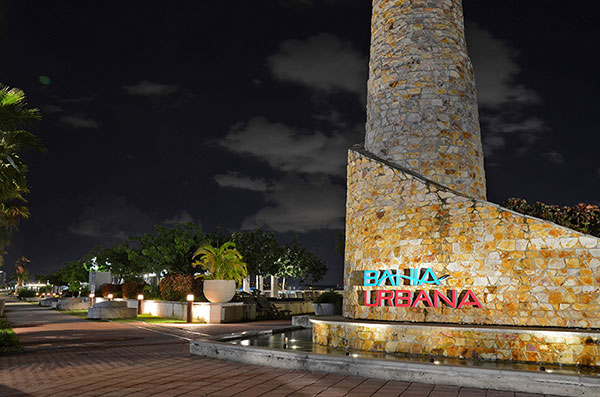
Bahia Urbana, a bayside park on the outskirts of the old city that hosts concerts and special events, as well as ship tours and other tourist adventures.
Cristo and La Fortaleza streets have some of the old city’s smartest boutiques and galleries, but you’ll also want to look to Calle San Francisco, as well as San Jose. There are great cafes, bars, and restaurants throughout the historic sector, but Recinto Sur has become its restaurant row, where you can find classic comida criolla in authentic settings, Spanish food with live flamenco show, inventive contemporary cuisine to live U.S. and Latin Jazz shows and so much more.
Of course one of the joys of the Old City is stumbling around its side streets and cooling off in its gorgeous plazas, which offer shady benches and refreshment stands. Plaza de Colon, at the main entrance to Old San Juan, is centered on a monument of Columbus, but different levels of terraces and fountains and shady corners. Plaza de Las Armas, located at Old San Juan’s heart, is home to the stately San Juan City Hall and Puerto Rico State Department, as well as a number of restaurants and boutiques. The fountain was built to represent the four seasons, and the statue of the gentleman sitting on the bench is Titi Curet, and Old City fixture during his life who was perhaps Puerto Rico’s most prolific writer of salsa music. There are also a number of plazas near the cruise ship ports along the bay.
Artisans often hawk their wares in the plazas and promenades while musicians perform in these public spaces as well. In fact, the city of San Juan has a continuing live music program throughout Old San Juan and the rest of the city that take place on certain nights and weekends throughout the year. The newest addition to the ports area is Bahia Urbana, a bayside park on the outskirts of the old city that hosts concerts and special events, as well as ship tours and other tourist adventures.
Old San Juan is only one-square mile, but it can take days to explore its many charms. When it comes time to say goodbye, you’ll already be plotting a return to, as the Estrada song says, “search for my love, and dream again, in my Old San Juan.”
Hot spots right now
In San Juan, one of the most cosmopolitan cities in the Caribbean, trendy and new restaurants are on nearly every corner. There’s no denying the appeal of hitting up the trendiest spots in town to get those hearts pumping and taste buds delighted.
In San Juan, one of the most cosmopolitan cities in the Caribbean, trendy and new restaurants are on nearly every corner.
There’s no denying the appeal of hitting up the trendiest spots in town to get those hearts pumping and taste buds delighted.
Cocina Abierta in Condado is an interactive open kitchen where culinary ideas are inspired and created. Just like the restaurant’s name suggests, the chef opens his kitchen to share best-kept secrets and knowledge inside this unique Atelier kitchen.
The contemporary and eclectic décor is a mélange of concrete walls, modern light fixtures, custom-made furniture, and repurposed decorative pieces; making it one of the most creative multi-layered spaces in Puerto Rico.
The menu is divided into five acts, allowing you to mix, match and create your ultimate tasting menu. Three wine pairing suggestions accompany each dish.
Don’t skip on the cocktails! They are hand-crafted at the Tiki Bar by expert mixologists who use local ingredients and top-shelf liquors from the world-class collection.
VIVO Beach Club is Puerto Rico’s liveliest oceanfront destination featuring an outdoor beach club and pool, restaurants and bars, and a full-scale brewery called Ocean Lab. It serves comfort food in a casual environment with 9 plasmas to watch sports or just relax and taste the diverse offering of local beers. Guests can experience how beer is produced by taking a tour in the microbrewery.
Situated on one of the island’s top ranked beaches and next to the Isla Verde’s hotel district, VIVO Beach Club has the perfect ingredients for a great Caribbean experience. This hip venue has established itself as the best day and night club in the metropolitan area.
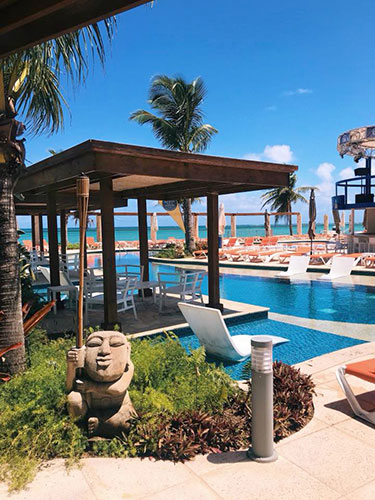
VIVO Beach Club is Puerto Rico’s liveliest oceanfront destination featuring an outdoor beach club and pool, restaurants and bars, and a full-scale brewery called Ocean Lab.
VIVO’s AT&T Arena includes a 9,000 square foot stage that can easily cater to over 30 musicians for a large array of performances, as well as a dance floor and multiple staging areas to accommodate over 5,000 people.
La Placita, the last of the traditional fresh food markets in Puerto Rico before the arrival of supermarkets in the 1970s, is still the heart and soul of Santurce’s hottest nightlife scene.
You can still buy fruits, vegetables, flowers, street food, and fruit shakes during the day. But La Placita is now known for its dozens of restaurants with extensive menu selections, cafes, and nightclubs that surround the traditional food market building.
Especially good on Thursday and Friday nights, the historic market plaza and its surrounding streets host what becomes a street party with people of all ages crowding the square to mingle, talk, drink, listen, and dance to music until the wee hours. The vibe is fun and laid back.
Move over old-school steakhouses, Rare 125º Neighborhood Grill in Miramar has arrived with a modern approach, excellent cuts, sides, and sauces. The restaurant is upscale and trendy without the pretensions of white tablecloths, providing top-notch service.
The lunch options are enticing, with bento box–style steak lunches.
Rare 125° refers to the ideal preparation of the perfect steak, and while this is not a house rule overriding your preferences, it is a commitment to providing the ultimate restaurant experience.
House specialty appetizers are the Beef Tataki and Pork Belly Chicharron. The pork belly is a crowd pleaser of crispy comfort served with whipped black refried beans and a cleansing lemon crème. The Tataki consists of a few slices of the house specialty pastrami rubbed steak, a small mound of dulcet mushroom escabeche, ponzu sauce, and thinly sliced cucumber.
Rare 125° opens for lunch every day from 11:30 a.m. to 3 p.m. and features wraps, burgers, and $15 lunch boxes like the pork tenderloin with vegetable risotto and guava marmalade.
Puerto Rican artisan wholesale bakery Cidrines opened a stylish venue, SOBAO by Los Cidrines, located at the AC Hotel by Marriott in Condado. The name SOBAO originates from Sobao sweet bread, the company’s star product responsible for its success.
Along with the bakery, the venue also includes a restaurant called La Bodeguita, which offers a genuinely spectacular culinary experience.
Upon entering the restaurant, you will see a display of photos and tasteful memorabilia honoring the life of Doña Lidia Miranda and her family, the Cidrines.
The menu at La Bodeguita has a good selection of wines and fresh fish, meat, chicken and pasta and its famous Cocas (similar to pizzas), burgers and tapas. Sobao by Los Cidrines has live music every Thursday, Friday, and Saturday evening.
El Mercado de Paseo Caribe is a modern, upscale food market inside a luxurious waterfront residential complex that brings together a mix of local gourmet restaurants, butcher shops, and other gourmet food boutiques under one roof.
The market has a vibrant feel with its restaurant kitchens and food vendors complimented by the vast, colorful mural created by renowned artist Tom Christopher.
Eateries like Café Alto Grande, Napolitana pizzeria, and the Noodle Merchant rub elbows with well-known local favorites like La Hacienda Meat Market from Miramar, Señor Paleta from Old San Juan, and El Pescador from Santurce, just to name a few.
Along with the impressive array of food options, El Mercado de Paseo Caribe also hosts live entertainment.
Princesa Gastrobar, nestled in a beautiful garden patio surrounded by lush vegetation and trees next to the old La Princesa jail which today houses the offices of the Puerto Rico Tourism Co., sits at the edge of the famous city wall that historically encompassed all of Old City.
The restaurant’s menu features some unique recipes found in an 1800’s Puerto Rican cookbook that blends Spanish and Puerto Rican dishes. These recipes are marked on the menu by a local tree frog called the Coqui.
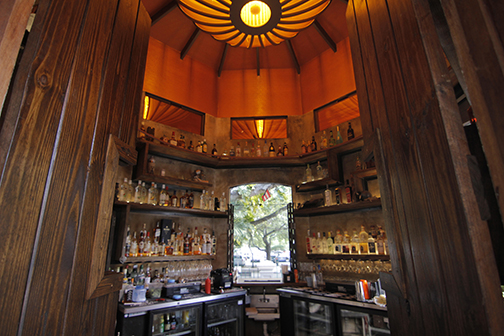
Princesa Gastrobar is nestled in a beautiful garden patio surrounded by lush vegetation and trees next to the old La Princesa jail.
Its specialty is Spanish croquettes, heavenly bites made with chicken and Iberian ham and served over béchamel sauce. Princesa Gastrobar also offers a variety of refreshing rum cocktails and educates its visitors about the history of the Rums of Puerto Rico.
This exclusive venue will make its visitors feel the magic of the story behind its unique location.
Casa Cortes ChocoBar is a restaurant and art gallery in Old San Juan operated by the Cortes family, the biggest chocolate-makers in the entire Caribbean.
They opened this popular and unique venue, voted Best Restaurant in the Caribbean by the readers of USA Today, to share tasty meals and drinks that incorporate the family’s greatest treasure — wickedly delicious chocolate.
The chocolate drinks are out of this world. Get them hot or cold, or with marshmallows. The menu includes specialty drinks like a Choco Martini or Bloody Choco Mary. There are breakfast items, appetizers, sandwiches, entrees, and pastries where chocolate infuses every bite.
On Thursday, Saturday, and Sunday a gallery upstairs offers a glimpse of the family’s private contemporary Caribbean art collection.
Looking for a stiff drink? Then La Casita de Rones in Old San Juan is the right place. This pink-colored lovely venue (once the home of the Puerto Rico Tourism Company Information Center) has two bars, a restaurant, and shop developed by the local government to promote the Rums of Puerto Rico program.
This charming venue in the touristic area of the Old City next to the cruise ship terminals and with views of the San Juan Bay sells and promotes brands like Bacardi, Serralles, Club Caribe, Barrilito, Caray and Trigo and artisanal products by Destileria Cruz, and El Pitorro de Destileria Coqui.
A variety of mouthwatering rum-based signature concoctions, handcrafted and pressed sangrias, and tropical classics, like the famous piña colada, are masterly crafted here to compliment a varied selection of Puerto Rican appetizers, salads, sharing dishes, and entrees.
So check them out. You might just spot some celebrities while you’re there!
Mysterious San Juan
The ancient city tells its own hidden history
The city of San Juan was founded in 1520 after Juan Ponce de Leon decided to relocate from the town of Caparra.
Extreme heat and humidity as well as rebellious Taino Indians made them resettle on the edge of a 2.5 mile size isle overlooking the bay where they had already established a port.
The first dwellers were mostly gold diggers and a number of clergymen. This first settlement to San Juan occurred 100 years before the Mayflower pilgrims arrived at Plymouth.
San Juan developed into a full blown city by the late 18th century and its growth was limited because it was confined within walls built to protect it from invaders
During the 19th century, San Juan was overcrowded and a busy center of commerce, government, military, and cultural life. After the settlement of Americans and the tearing down of inland walls, wealthy and upper middle class families started moving to areas like Condado and Miramar, and the Old City became an impoverished working class town.
A restoration project in the 1970’s and a growing conscience of the city’s charm started attracting middle-class and affluent families. The one constant trait of today’s sanjuaneros is that they are proud of their town and prefer to live in a cultural and historic ambiance rather than in the midst of suburban life full of asphalt and shopping malls.
The walking tour
Bienvenidos participated in a walking tour called San Juan Oculto (Hidden San Juan), a project designed to reveal the architectural wonders and details of the Old City. It was initiated by a group of volunteers, graduate students and teachers from the University of Puerto Rico’s School of Architecture, who teamed up with the San Martin de Porres Foundation. The idea was to develop an educational walking tour as a source of funding- the cost of the tour is what the guest wishes to donate towards the foundation’s work in needy areas of Haiti and the Dominican Republic.
“We want to include tourists, visitors, and student groups who want to learn about the richness, and history present when you walk through Old San Juan,” said Prof. Jorge Lizardi-Pollock, who leads the project along with Pedro Van Marissing of the Foundation.
San Juan Oculto offers three different routes. The first called One City, Many Pasts demonstrates the different historical layers preserved in architectural styles. The second called Architecture, Order and Authority in the Old City explores the structures related to the institutions of power in Spanish colonial times and the third route called San Juan, A Swarm or Everyday Practices focuses on the city as it worked for the common person before electricity and modern aqueducts.
Here come the cabezudos
The century’s old tradition of full head puppets is alive and right in the heart of Puerto Rico’s largest street festival in Old San Juan
“Hurry up, the cabezudos parade is going to start!”
People are scrambling for a great spot to see the action, dads are carrying small children over their arms, and everyone has their phones out ready to take pictures or record. Nobody wants to miss the action.
The narrow street in Old San Juan is packed because the cabezudos, known as bigheads or full head puppets, are about to begin the colorful march that kicks off the traditional Fiestas of San Sebastian Street (the Fiestas), held every year on the third weekend of January. It’s a huge popular celebration that has become the largest festival in all of the Caribbean, equivalent to the island’s very own Mardi Gras.
The crowd jams out to the middle of the street and once the loud countdown reaches zero the city mayor cuts the ribbon of official ceremony, cheers erupt and the Fiestas have begun.
Then the cabezudos begin their march down the street to the beat of traditional plena drums and chants and a feisty marching brass band is immediately joined by hundreds of spectators old and young, who instantly turn from audience to participants in the swinging and joyful trek. Some of the first cabezudos that appear depict historical or folk characters of the Old City, like Doña Fela, the famous mayor of the 40’s and 50’s known for her towering Marge Simpson- style hairdo or Diplo, a popular comedy character from the same era.
Children giggle and point at the cabezudos or try to touch them while others just stare in awe. “The cabezudos parade is one of those things that make me feel like a little boy again,” said a smiling David Padilla, who is a 55 year-old resident of San Juan who never misses the event.
Next come the comparsa or marching crew of the Agua Sol y Sereno theater company, with an explosion of energy and circus-like ambiance. More than 40 finely crafted cabezudos and giant puppets among a colorfully clad of stilt walkers manage to dance to the tropical rhythm of plena.
“I remember as a kid I was so excited to be in the cabezudos parade!” said Maria Muñoz, a 20 year-old college student from the west coast of Puerto Rico. It also made me so curious that I would bombard my parents with questions about who those characters were and their history. It’s a very exciting event and when I have kids I will definitely bring them to the parade and the Fiestas.”
Medieval roots
The tradition of the cabezudos began in Spain around the 12th century specifically in festivities in northern Basque Country, and in the provinces (then kingdoms) of Aragon and Valencia, among others. According to Spanish historian Javier Aparicio, the tradition became widespread as the catholic kings conquered Spain again from Islamic rule in the late 15th century. The reason, according to Aparicio, was that Islamic law prohibited depictions of saints and even ordinary people so when the Catholics regained power these restrictions were eliminated and the use of cabezudos and giant puppets proliferated through most regions.
In Puerto Rico it all started in the mid 1950’s when the parish priest in Old San Juan’s Church of San Jose organized a religious procession mixed with music and festivities to honor Saint Sebastian, the patron of the street where the temple was built and situated in 1511.
The priest, Juan Manuel Madrazo, a native of the northern Basque Country of Spain, started the festivity to help finance the repairs of the San Jose church, the second oldest Christian temple in the Americas, as well as a school he was starting in Barrio La Perla, which lies just outside the ancient city walls.
Father Madrazo went to Spain for vacation and came back with two giant puppets, known also as gigantones and a couple of cabezudos. The Basque Country of Spain is one of the regions where this tradition has been in place for centuries.
The cabezudos brought by father Madrazo were called sanchos, after the famous literary character of Don Quijote’s partner and a symbol of the ordinary man of the village. The two giant puppets depicted the 16th century Catholic kings of Spain, Fernando and Isabel, precisely the ones who conquered Spain for the second time from the Islamic rulers and sent Christopher Columbus off to conquer the New World.
So these colorful puppets of enormous heads designed to stand out in a crowd became the heart and soul of the Fiestas, kicking off the festivities with a parade along the street that featured the cabezudos along with marching bands. The event was celebrated during the 1950’s and it was a great neighborhood block party for residents of Old San Juan but unknown to the rest of Puerto Rico. Read more
Art styles from realism to abstract painting
Puerto Rico is an island where its creative talent and plastic arts overflow, and painting is no exception. The work of dozens of Puerto Rican artists can be appreciated at key museums and galleries in Puerto Rico, the U.S. mainland, Latin America, and Europe.
Four local stars share their style, techniques and vision
Puerto Rico is an island where its creative talent and plastic arts overflow, and painting is no exception. The work of dozens of Puerto Rican artists can be appreciated at key museums and galleries in Puerto Rico, the U.S. mainland, Latin America, and Europe.
From Jose Campeche – the forefather of Puerto Rican artists to the contemporaries; local artists have cultivated a great variety of styles that go from realism to figurative to abstract.
BIENVENIDOS interviewed four Puerto Rican internationally renowned artists who reflect some of the aforementioned tendencies and exemplify the quality of art developed on the island.

